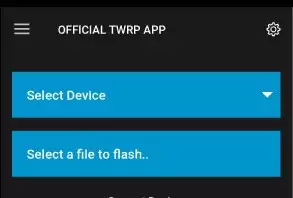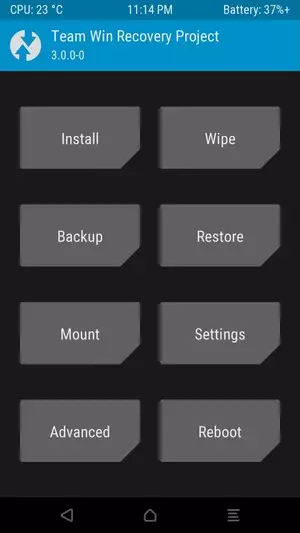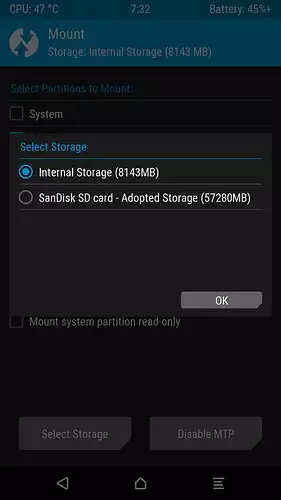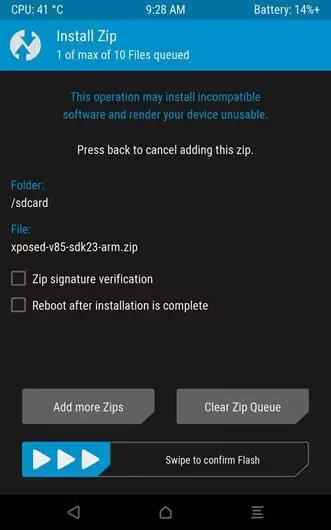Flash firmware on Vodafone Smart N9
Mobiles >> Vodafone >> Vodafone Smart N9| Specifications | Reviews | Secret codes |
| Unlock phone | Root phone |
| Backup | Flash Firmware | Screenshot |
| Hard Reset |
How to flash Vodafone Smart N9?
Why reinstall the firmware?
Errors periodically appear in the Android operating system.
Some installed applications do not open.
Many programs from the Play Market do not start.
The phone turns off for no apparent reason.
The phone is slow.
You have decided to try a different version of Android.
Where can I find the firmware?
On the official website of your phone manufacturer.
On specialized services where users post custom or official OS.
What should be done before installing the firmware?
Back up your contacts and user data and transfer it to your computer.
Insert your SD card into your phone. It must have enough memory to fit the firmware.
Find out the exact model of your smartphone.
Fully charge your device. If the battery runs out during the firmware, the device will no longer turn on.
Find and download the archive with Firmware.
Installing TWRP Recovery
Download the Official TWRP App to your phone from the Play Market. And install this app.
When you start the application for the first time, you must consent to future manipulations, as well as consent to granting the application Superuser rights. Check the checkboxes and press the 'OK' button.
After moving to the next screen, you need to select the 'TWRP FLASH' item and give the application root rights.

On the main screen of the application, click on the 'Select Device' drop-down list, and select your phone model.
After selecting a device, the application will direct the user to a web page to download the appropriate modified recovery environment image file. Download the suggested *.img file.
When the file is loaded, you need to return to the main screen of the Official TWRP App and press the 'Select a file to flash' button. Select the file downloaded in the previous step.
Press the 'FLASH TO RECOVERY' button and confirm your choice, press 'OK'.
After the burn process is complete, the message 'Flash Completed Succsessfuly!' appears. Click 'OK'. The TWRP installation procedure can be considered complete..
Copy the required files to the memory card. Using a PC or laptop card reader.
Insert a SD memory card into the phone.
To reboot into recovery, you need to use a special item in the Official TWRP App menu, accessible by pressing the button with three stripes in the upper left corner of the main screen of the application. Open the menu and select the 'Reboot' item, and then click on the 'REBOOT RECOVERY' button.
Firmware via TWRP

Before flashing, you need to clear the 'Cache' and 'Data' sections, press 'WIPE' on the main screen. This will delete all user data from the device, but avoid a wide range of software errors and other problems.
Press the 'Install' button to start the flashing.

On the file selection screen, at the very top there is a 'Storage' button for selecting an SD card.
Select the storage to which the files were copied.

Find the file we need and click on it. A screen opens with a warning about possible negative consequences, you need to check the item 'Zip signature verification', which will avoid using corrupted files when writing to the phone's memory sections.
The procedure for writing files to the device's memory will begin, accompanied by the appearance of inscriptions in the log field and the completion of the progress bar.
After completing the installation procedure, a 'Successful' message appears on the screen.
Summary: Smart Phone OS: Android 8.1 (Oreo); Chipset: Mediatek MT6739WA; CPU: Quad-core 1.3 GHz Cortex-A53; GPU: Mali-T720MP2; Type: IPS LCD capacitive touchscreen, 16M colors; Screen Size: 5.5 inches, 78.1 cm2 (~77.1% screen-to-body ratio); Resolution: 720 x 1440 pixels, 18: 9 ratio (~293 ppi density); Multitouch: Yes; Main Camera: 13 MP, AF, LED flash; Features: Geo-tagging, touch focus, face detection, HDR, panorama; Video: 1080p@30fps; Front Camera: 8 MP, LED flash; Card slot: microSD, up to 32 GB; Internal: 16 GB, 2 GB RAM; Alert types: Vibration; MP3, WAV ringtones; Loudspeaker: Yes; 3.5mm jack: Yes; WLAN: Wi-Fi 802.11 b/g/n, hotspot; Bluetooth: 4.0, A2DP; GPS: Yes, with A- ...
Comments, questions and answers on the flash firmware Vodafone Smart N9
Ask a question about Vodafone Smart N9




